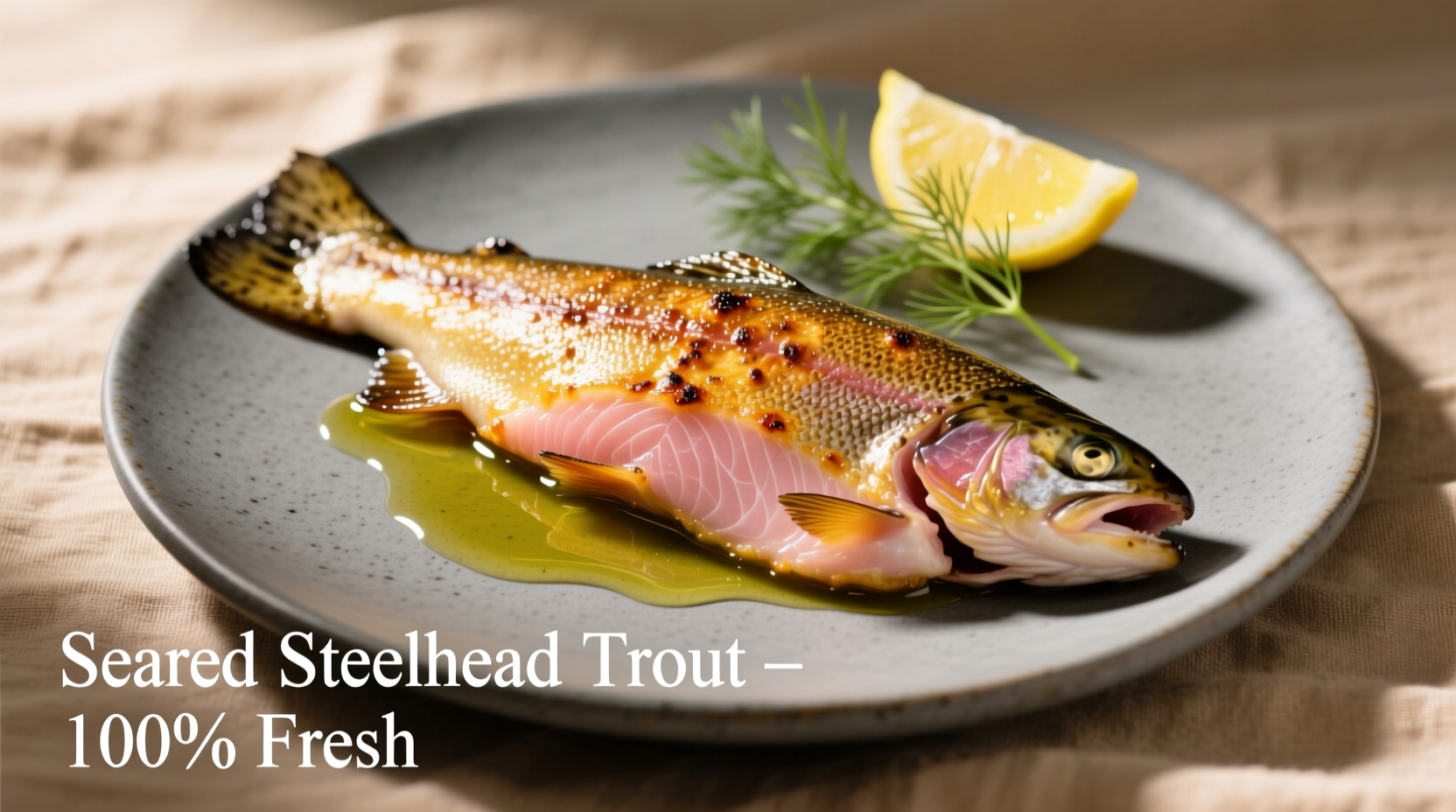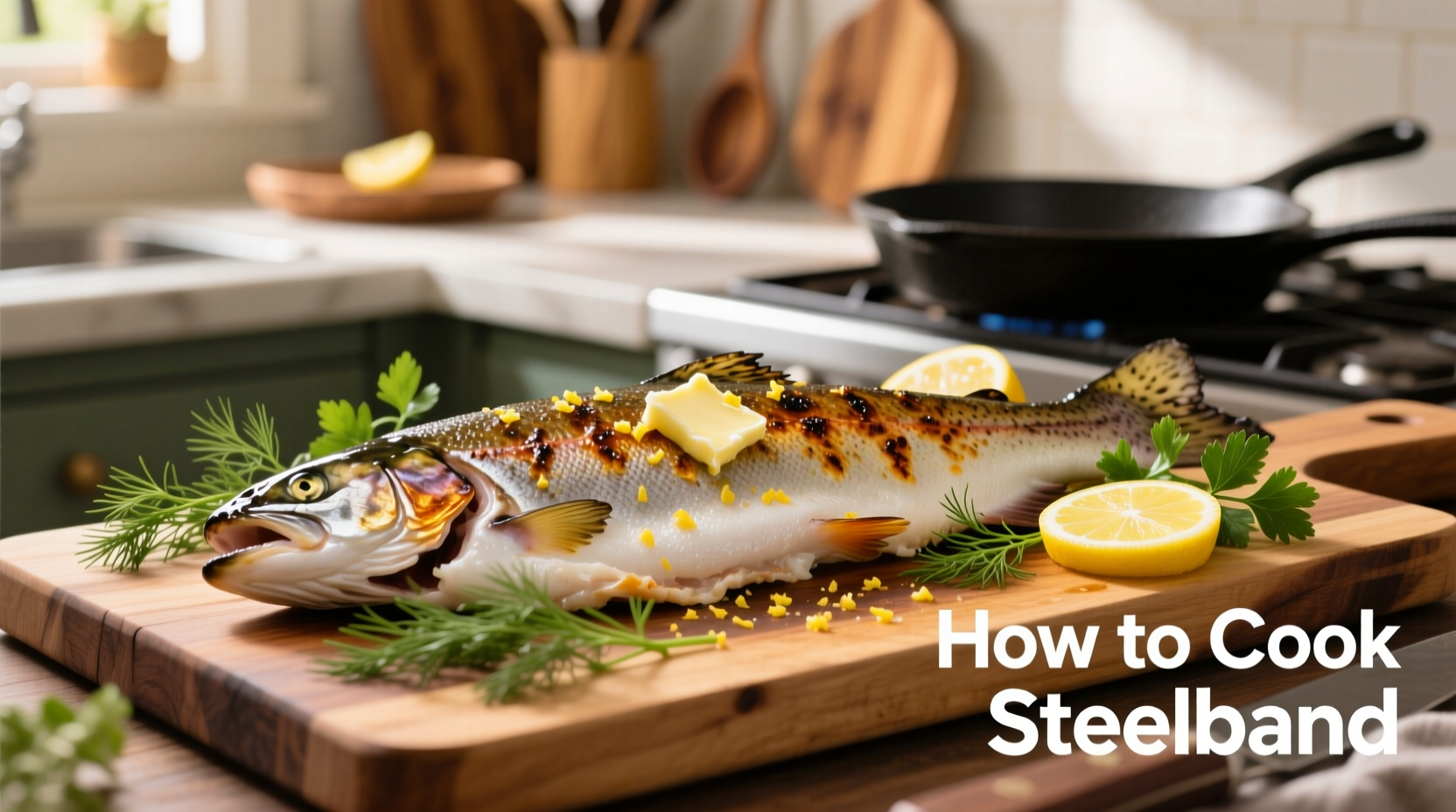Steelhead trout cooks best when seared skin-side down for 4-5 minutes at 375°F (190°C) then flipped to finish for 2-3 minutes, reaching an internal temperature of 125-130°F (52-54°C) for medium-rare perfection. This migratory rainbow trout variety requires careful heat management to preserve its delicate texture while developing rich flavor.
Why Steelhead Deserves Special Cooking Attention
Unlike its freshwater cousin, steelhead trout spends part of its life in the ocean, developing a richer fat content and more complex flavor profile than regular rainbow trout. This unique characteristic means it responds differently to heat than other fish varieties. The USDA Food Safety and Inspection Service recommends cooking all fish to a minimum internal temperature of 145°F (63°C), but culinary professionals often pull steelhead at 125-130°F for optimal texture. USDA guidelines confirm this lower temperature is safe for immediate consumption of high-quality, fresh steelhead.
Step-by-Step Steelhead Preparation
Proper preparation makes the difference between dry, overcooked fish and moist, flavorful results. Follow these professional kitchen techniques:
Dry Brining for Maximum Flavor Retention
Salt your steelhead fillets 20-30 minutes before cooking with 1 teaspoon of kosher salt per pound. This draws out excess moisture while seasoning the flesh, creating a protective layer that prevents moisture loss during cooking. Pat thoroughly dry with paper towels before applying oil – wet surfaces cause steaming rather than proper searing.
Essential Equipment Check
Use an instant-read thermometer for accuracy – visual cues alone can't reliably indicate doneness. A heavy-bottomed skillet maintains consistent temperature better than thin pans. For grilling, ensure your grate is clean and well-oiled to prevent sticking.
| Cooking Method | Optimal Temperature | Cooking Time (6oz fillet) | Best For |
|---|---|---|---|
| Pan-Searing | 375°F (190°C) | 4-5 min skin-side, 2-3 min flesh-side | Crisp skin, restaurant-quality results |
| Grilling | Medium-high heat | 3-4 min per side | Smoky flavor, outdoor cooking |
| Baking | 400°F (204°C) | 10-12 minutes | Hands-off cooking, multiple portions |
| Poaching | 160-180°F (71-82°C) | 8-10 minutes | Delicate preparations, meal prep |
Mastering the Four Primary Cooking Methods
Pan-Seared Steelhead with Crisp Skin
This technique delivers restaurant-quality results in your home kitchen. Heat 1 tablespoon of high-smoke point oil (avocado or grapeseed) in a cast iron or stainless steel skillet until shimmering. Place fillets skin-side down with space between them. Press gently with a spatula for 30 seconds to prevent curling. Cook undisturbed for 4-5 minutes until skin releases naturally from the pan. Flip and cook 2-3 minutes more. The skin should be golden and crisp while the flesh remains moist.
Grilling Steelhead Without Sticking
Preheat your grill to medium-high. Oil the grates thoroughly using tongs and a folded paper towel dipped in oil. Place fillets at a 45° angle to the grates. Close the lid and cook 3-4 minutes until grill marks appear and the fish releases easily. Rotate 90° for crosshatch marks if desired, then flip and finish cooking. Steelhead's firm texture makes it one of the few delicate fish varieties suitable for direct grilling.
Baking Steelhead for Hands-Off Perfection
Preheat oven to 400°F (204°C). Place seasoned fillets on a parchment-lined baking sheet. Bake 10-12 minutes until the internal temperature reaches 125-130°F. For added flavor, top with lemon slices and fresh herbs during the last 3 minutes of cooking. Baking works particularly well when preparing multiple portions simultaneously.
Poaching Steelhead for Delicate Dishes
Maintain a gentle simmer (160-180°F) in a flavorful broth of water, white wine, lemon, and herbs. Submerge steelhead fillets and cook 8-10 minutes until opaque but still moist. This method preserves maximum moisture and works well for meal prep or dishes requiring flaked fish.
Flavor Pairings That Complement Steelhead's Delicate Taste
Steelhead's mild, slightly sweet flavor with oceanic notes pairs beautifully with:
- Citrus elements: Lemon, orange, or yuzu zest enhances without overpowering
- Herbs: Dill, tarragon, and chives provide subtle aromatic notes
- Acids: White wine vinegar or apple cider vinegar balances richness
- Earthy elements: Morel mushrooms or fennel complement its oceanic notes
- Light fats: Browned butter or olive oil finish adds richness without heaviness
Avoid heavy spice blends that overwhelm steelhead's delicate flavor. Instead, focus on enhancing its natural qualities with minimal seasoning. A simple preparation of salt, pepper, and lemon often showcases steelhead's quality best.

Avoiding Common Steelhead Cooking Mistakes
Even experienced home cooks make these critical errors:
- Overcooking: Steelhead continues cooking after removal from heat (carryover cooking). Pull it 5°F below target temperature.
- Wet fish surface: Moisture prevents proper searing. Always pat thoroughly dry before cooking.
- Insufficient preheating: The pan must be hot enough to create instant sear. Test with a few drops of water.
- Disturbing too soon: Let the fish release naturally from the cooking surface before attempting to flip.
- Using low smoke-point oils: Extra virgin olive oil burns at steelhead's optimal cooking temperature.
Serving Steelhead for Maximum Enjoyment
Serve immediately after cooking for best texture. Steelhead's delicate structure deteriorates quickly as it cools. Pair with light accompaniments that won't compete with its subtle flavor:
- Roasted asparagus with lemon zest
- Wild rice pilaf with toasted almonds
- Steamed baby bok choy with garlic
- Simple arugula salad with citrus vinaigrette
For special occasions, top with a beurre blanc sauce made from reduced white wine, shallots, and cold butter whisked in gradually. The emulsified butter adds richness without masking steelhead's delicate flavor.











 浙公网安备
33010002000092号
浙公网安备
33010002000092号 浙B2-20120091-4
浙B2-20120091-4